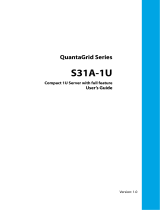
18
2.5.5 LDAP/E-Directory Settings
The displayed table shows the configured Role Groups and available
slots. You can modify or add/delete role groups from here. The Group
Search Base can be any path from where a Group is located to the Base
DN. The Group Name should correspond to the name of an actual LDAP/
E-Directory group. To view the page, the user must at least be a User. To
modify or add a group, the user must be an Administrator.
NOTE: Free slots are denoted by “~” in all columns for the slot.
Advanced Settings
Click this option to congure LDAP/E-Directory Advanced Settings. Options
are Enable LDAP/E-Directory Authentication, IP Address, Port, Bind DN,
Password and Search base.
Add Role Group
Select a free slot and click ‘Add Role Group’ to add a new role group to the
device. Alternatively, double click on a free slot to add a role group.
Modify Role Group
Select a congured slot and click ‘Modify Role Group’ to modify that role
group. Alternatively, double click on the congured slot.




















